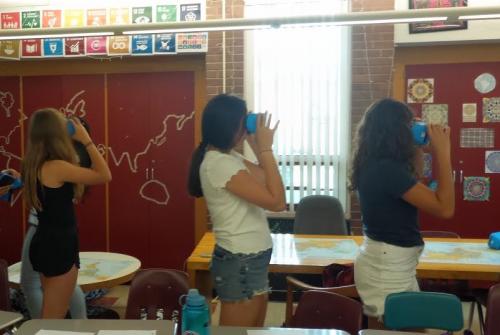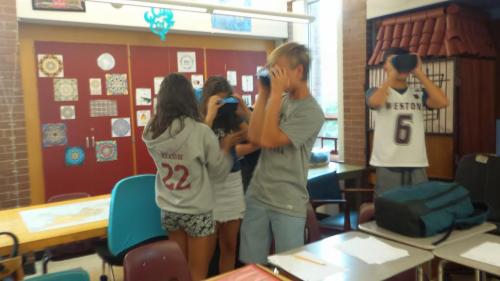Coming back to school was both exciting and overwhelming at the same time. Learning the names of 100+ students while having a very limited short term memory due to lack of sleep was one of the greatest challenges. I also had a hard time adjusting to it getting so dark so early - I love that Arctic sun.
On the first day back to school I decided to not worry about establishing classroom rules and routines and instead focus on showing students why I was late to school this year. This started with a clarification for the students that I was in the Arctic and NOT Antarctica; it also involved sharing some of the permafrost basics. I quickly shifted the focus onto the students by taking out our Google Expeditions Exploration Kit so I could take my students on a virtual field trip to the Arctic. This is a kit stocked with 20 android phones housed in sturdy VR viewers and they are very easy to use. Students were able to type in a couple of key terms into the youtube app and pull up the 360 tour video I had created two days before while exploring the PermafrostPermanently frozen ground. tunnel in Fairbanks. Now 9th graders are pretty easy to get excited, but this activity turned into the perfect storm of excitement factors. While some students are familiar with this technology through gaming, many have not used it in school before. None of the students knew much about permafrost, and the idea of a permafrost tunnel with ancient grass, animal bones, and ice wedges in mysterious shapes is just too good.


- < prev
- 25 of 25


Comments